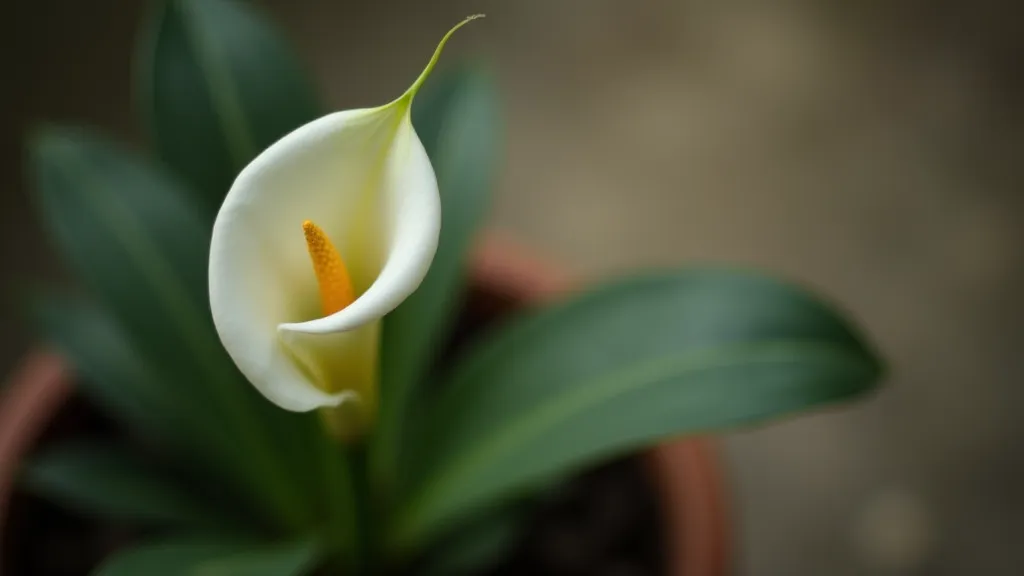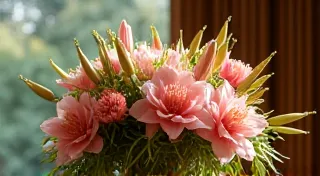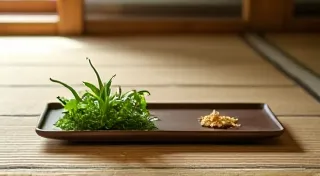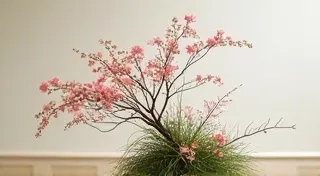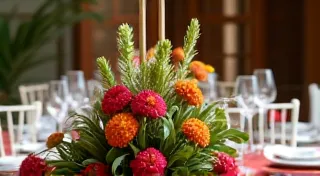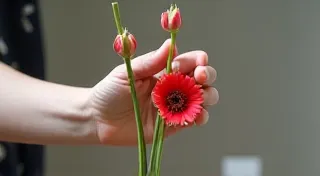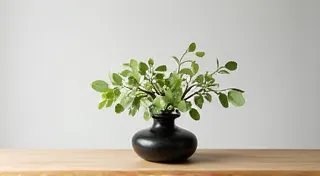Creating a Minimalist Ikebana Arrangement: Less is More
Ikebana, the Japanese art of flower arranging, is often perceived as complex, with intricate structures and a profusion of materials. While elaborate arrangements certainly hold their beauty, there's a quiet power and elegance to be found in minimalism. This article will guide you through the principles of creating a minimalist Ikebana arrangement, demonstrating how "less is more" can achieve profound beauty and harmony.
Understanding Minimalist Ikebana
Minimalist Ikebana isn't about simply using fewer flowers. It’s a philosophy rooted in Ma (間), the Japanese concept of negative space. Ma emphasizes the importance of the emptiness between elements, allowing each component to breathe and be fully appreciated. In minimalist Ikebana, the intentional use of negative space enhances the impact of the materials used. It's about carefully considering each stem, leaf, and branch, recognizing its individual contribution to the overall composition.
Key Principles of Minimalist Ikebana
- Limited Materials: Choose a small number of materials – perhaps just 3-5 stems or branches. Focus on quality over quantity.
- Strong Lines: Minimalist arrangements often rely on strong, clean lines. Consider the shape and direction of your materials. A single, dramatic curve can be more impactful than a cluster of smaller shapes.
- Negative Space: Pay close attention to the spaces *between* the materials. Don't be afraid to leave areas of emptiness. These spaces are just as important as the elements themselves.
- Color Palette: A restrained color palette is crucial. Monochromatic arrangements (using variations of a single color) or arrangements using complementary colors work particularly well.
- Balance and Harmony: While minimalist, the arrangement still needs to feel balanced. This can be achieved through asymmetry, playing with different heights, and considering the visual weight of each element.
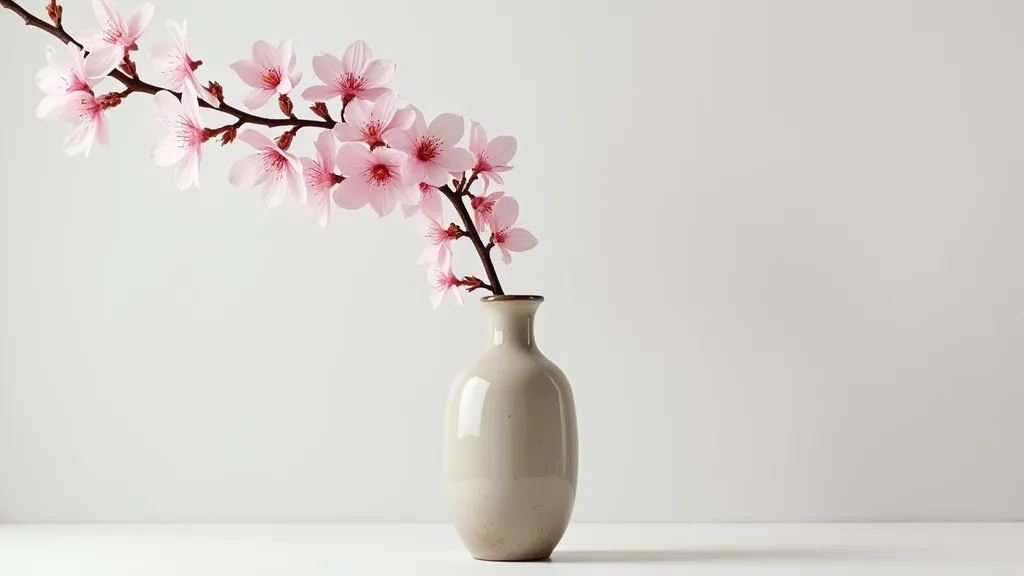
A Step-by-Step Guide to a Simple Minimalist Arrangement
- Choose Your Vessel: Select a simple, understated vase. A ceramic or glass vase in a neutral color (white, gray, brown) is ideal.
- Gather Your Materials: For this example, we'll use three stems: a sturdy branch, a delicate flower stem, and a single leaf.
- Establish the Main Line: Start with the sturdiest branch. This will serve as the main line of your arrangement. Consider its angle and how it directs the viewer's eye.
- Add the Flower: Choose a flower that complements the branch, either in color or form. Position it to create a visual counterpoint to the main line.
- Incorporate the Leaf: Use a single leaf to soften the composition and add a touch of natural beauty. The placement of the leaf can influence the overall balance of the arrangement.
- Observe and Adjust: Step back and observe the arrangement from different angles. Make subtle adjustments to the position of each element until you achieve a sense of harmony and balance.
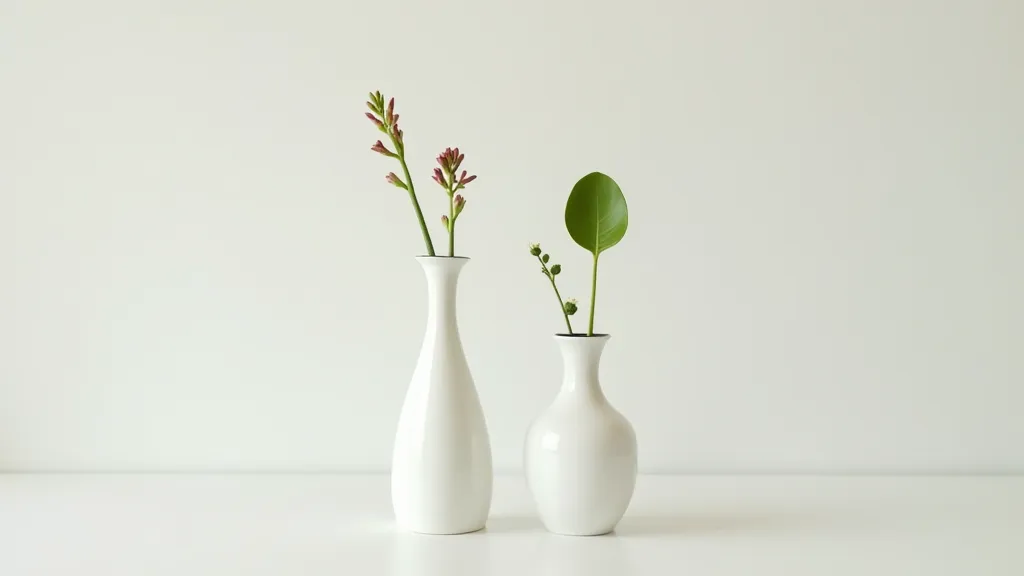
Finding Inspiration and Expressing Yourself
Minimalist Ikebana isn't about following strict rules. It's a form of artistic expression. While the principles provide a framework, feel free to experiment and find your own unique style. Look to nature for inspiration – the stark beauty of a lone tree against a winter sky, the graceful curve of a river, the simple elegance of a single flower.
Beyond the Arrangement
The practice of minimalist Ikebana extends beyond the physical arrangement. It’s a meditative process that encourages mindfulness, observation, and appreciation for the simple beauty of nature. Taking the time to create a minimalist arrangement can be a rewarding and peaceful experience, fostering a deeper connection to the art of Ikebana and to the natural world.
